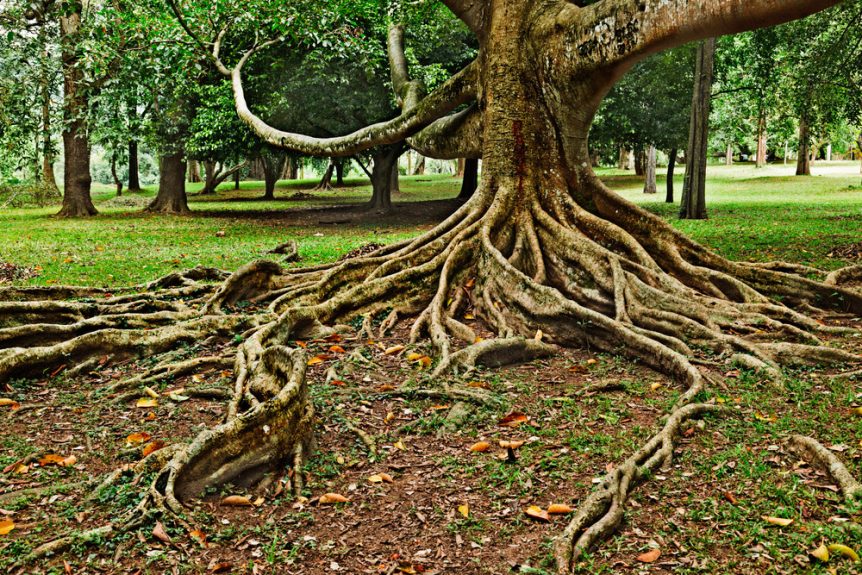
Arborists in Atlanta, Georgia, Share Information About Exposed Roots
Exposed tree roots can be a cause for concern. Healthy trees spread their roots both vertically and horizontally into the ground, seeking moisture, nutrients, and stability. The larger the tree, the more elaborate and larger the root system. Unfortunately, even large, seemingly stable trees can develop serious problems due to root exposure. It’s hard to nurse a tree with damaged roots back to health. Read on to find out what you can do to prevent and treat root exposure.
The Causes of Root Exposure
Trees typically have two different types of roots. Anchor roots run deep into the ground, growing deeper to support the height and weight of the tree. Feeder roots, on the other hand, can usually be found eight to eighteen inches under the ground. Feeder roots absorb nutrients, moisture, and oxygen to keep the tree alive and healthy. As you can imagine, feeder roots are the most easily exposed. There are several reasons why feeder roots can become exposed.
Some species, such as willows and poplar shade trees, are more likely to have exposed roots because they grow quickly. Root exposure is often common in older trees, as well. Another common cause of root exposure is the presence of obstructions, such as buildings, sidewalks, walls, fences, or driveways. As the feeder roots slowly encounter obstructions, they can be forced up and above the topsoil. More commonly, exposed roots are the result of heavy rain, water flow, or erosion. This is especially true where trees are growing on an uneven surface such as a hill.
Negative Effects of Root Exposure
Exposed roots can be hazardous not only to the tree’s health but to yours as well. Of course, they can be a tripping hazard, but exposed roots can also become infected. If untreated, the entire tree can die and become a danger to your home and loved ones. Dead trees are more likely to blow over in strong winds or catch fire in dry conditions.
Exposed roots are also more likely to be damaged by lawn care equipment, which can hinder the tree’s ability to gather proper nutrients and water. If you notice exposed roots near any structure, such as your shed, house, sidewalk, or driveway, contact an arborist before acting. They can help you determine how to best avoid the potential damage exposed roots may cause on your property.
How to Properly Treat Root Exposure
You may think that simply covering the exposed roots with soil will solve the problem, but this is rarely the case. Too much soil can smother the roots and too little soil can wash away with the next rain. Instead, cover the roots with mulch, such as pine straw or bark nuggets. A layer of mulch no more than four inches thick can help ensure your tree roots are protected while allowing them to gather the nutrients essential for the tree’s survival.
Avoid overwatering the tree and keep an eye out for more exposed roots. If you notice that your efforts are only temporary, consider calling an expert arborist to assess the situation and provide options to protect your trees and your property all at once.
About Boutte Tree
Boutte Tree Service has been serving Atlanta with pride since 2003. They put people first and trees a close second. Their company philosophy is one of safety, quality, and customer service. Call today for the best Atlanta arborists available.
